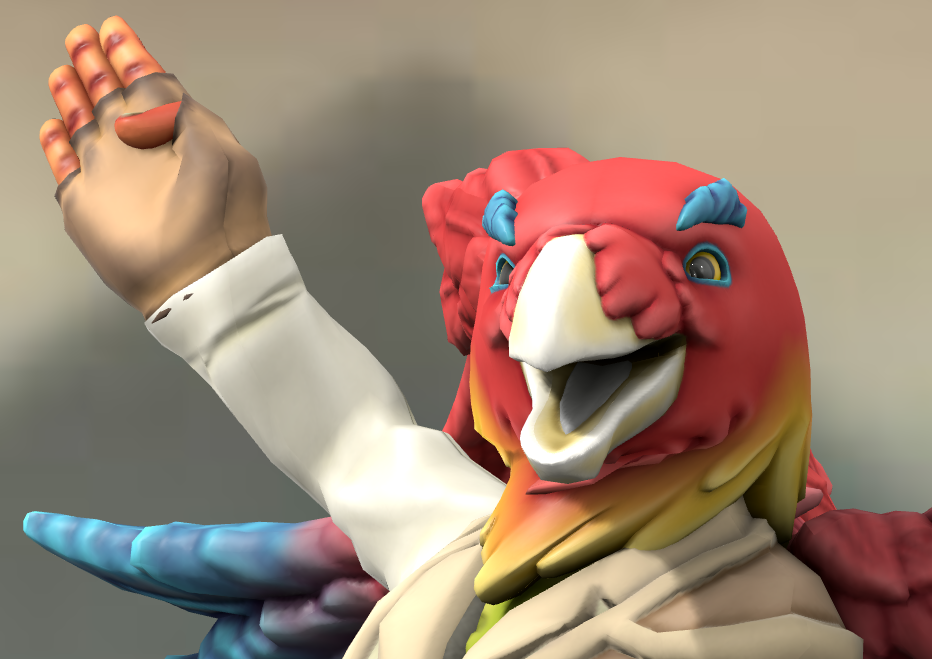Oxstrich
In the rainy lands of Amana, the oxtrich flourished. This flightless bird has the perfect mix of strength, agility, and ability to traverse the muddy terrain with ease to work as a beast of burden. They tend to be very amicable and protective like some breeds of dogs. Because of this, these large, avian beasts of burden, have become the go to method of non-magical travel on Amana.
Basic Information
Anatomy
Their feet have three talons and a hallux, similar to raptors like the eagle. Their talons are webbed, making it easier to maneuver in the mud.
Their legs are very muscular, making them exceptional draft animals. While they do not tend to kick, when they do it is very powerful, comparable to a full grown horse. Their power doesn't help them run faster, but they are capable of pulling or lifting considerable weight without it affecting their speed much. On average they can lift a load equal to their body weight, or pull three times their body weight, without affecting their running speed or acceleration at all. They are capable of lifting up to 5 times their body weight and pulling up to 10 times their body weight given the right circumstances.
Their wings are not very long, but can be flared quite widely. Not suitable for flight, they are mainly used for self defense and mating rituals now. They are also used to help regulate body temperature, stabilize themselves while running, and protect their legs while resting.
Their torsos are stout and streamlined. They are suitable for riders and harnesses. They are very lean.
Their necks are not as long as ostriches'. While strong compared to many birds, their neck is their most vulnerable spot. This is where handlers manipulate the most in order to control them.
Biological Traits
Their feathers are waterphobic thanks to two complimentary traits. Their skin excretes an oil that helps their feathers repel water. Their feathers can also puff out slightly to allow a small pocket of air. Working in tandem, these help keep the oxstriches body warm and dry, even in the harshest of storms. Because of this, skin disorders and balding can be major issues.
Genetics and Reproduction
They lay eggs that are kept in a communal nest of up to 100 eggs that take 40 to 50 days to hatch.
Growth Rate & Stages
Oxstriches grow to adulthood in 2 years. This makes farming and breeding easier to plan and predict.
Ecology and Habitats
They are fast creatures, but not exceptionally so. They have powerful legs which can kill many predators with ease, but can easily be out maneuvered and overcome. Because of this, wild populations thrive in muddy or swampy terrains.
Dietary Needs and Habits
They are herbivores. They prefer berries and will frequently eat the leaves of berry bushes along with the berries. A treat for them is mint plants.
Biological Cycle
During colder months, oxstriches will tend to stand on one leg to keep the other warm, and switch off back and forth. Draft oxstriches can frequently be seen with leggings to help keep their legs warm while working.
Behaviour
Self Defense
It is a relatively docile species. To defend itself, an oxstrich will either slash at its attacker with its talons or attempt to drown it in the mud. An easy way to tell when an oxstrich feels threatened and is likely to attack is when it flares its wings out. They do this to appear larger to the threat instead of fleeing. Do not advance on an oxstrich whose wings are fully flared.
Mating
Whether playfully or aggressively, when becoming territorial or competitive, especially when it comes to mating or pairing, oxstriches will peck at each other.
Much like a peacock presenting its tail, oxstrich will present their wings flared and full in order to attract a mate.
Additional Information
Domestication
There are three main traits that are bred specifically when raised as draft oxstriches, which are:
Outside of use as beasts of burden, they are also beloved pets. Their super waterphobic feathers are still preferred in this case, but not always required as many people provide housing and sometimes clothing to provide extra warmth.
- Super waterphobic feathers
- Exceptionally strong legs
- Thicker wings
Outside of use as beasts of burden, they are also beloved pets. Their super waterphobic feathers are still preferred in this case, but not always required as many people provide housing and sometimes clothing to provide extra warmth.
Uses, Products & Exploitation
They are mostly used for riding and pulling cargo. There are some farms where they are raised for their hides, feathers, meat, and eggs.
Geographic Origin and Distribution
They are native to Amana and The Wyldlands, but are also distributed to, and bred on Espiria, East Ruanteia, and West Ruanteia. Though uncommon, they can be seen as pets on many more continents.
Scientific Name
Fortis avis
Lifespan
50 years
Average Height
6 - 10 feet tall
Average Weight
200 - 450 lbs
Average Length
5 - 7 feet
Average Physique
Movement speeds
Ridden: 45 ft.
Pulling a cart or other cargo: 35 ft.
Ridden: 45 ft.
Pulling a cart or other cargo: 35 ft.
Body Tint, Colouring and Marking
Their skin is an ashen grey or pinkish color. Amani oxstrich feathers are umber brown or syrup brown and usually don't have white tips. Wyldlands oxstriches have charcoal black feathers and almost all have white tips. Because of the more avid travels of wyldfolk, and its more stark and remarkable appearance, this is the more well-known color scheme.
Geographic Distribution





Comments